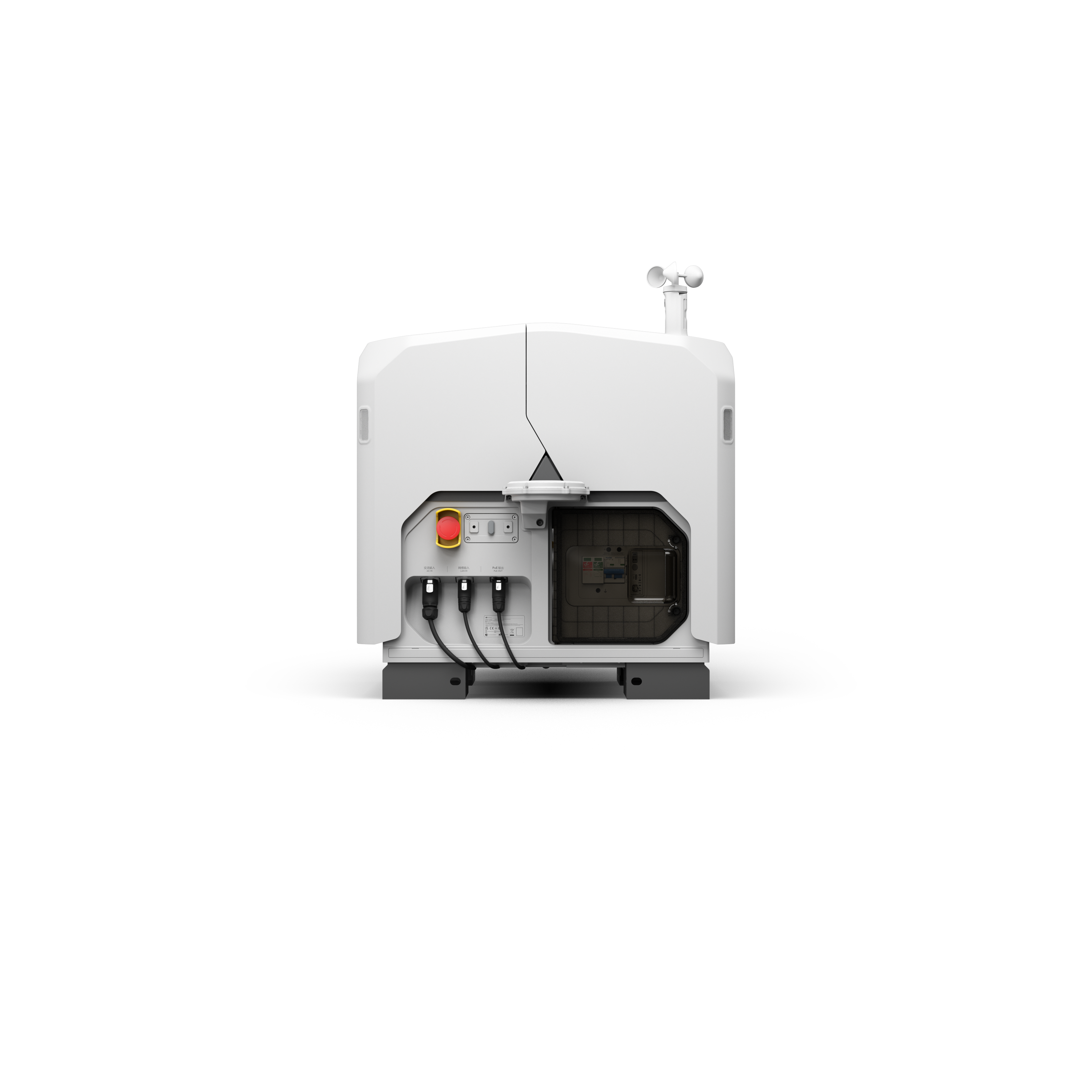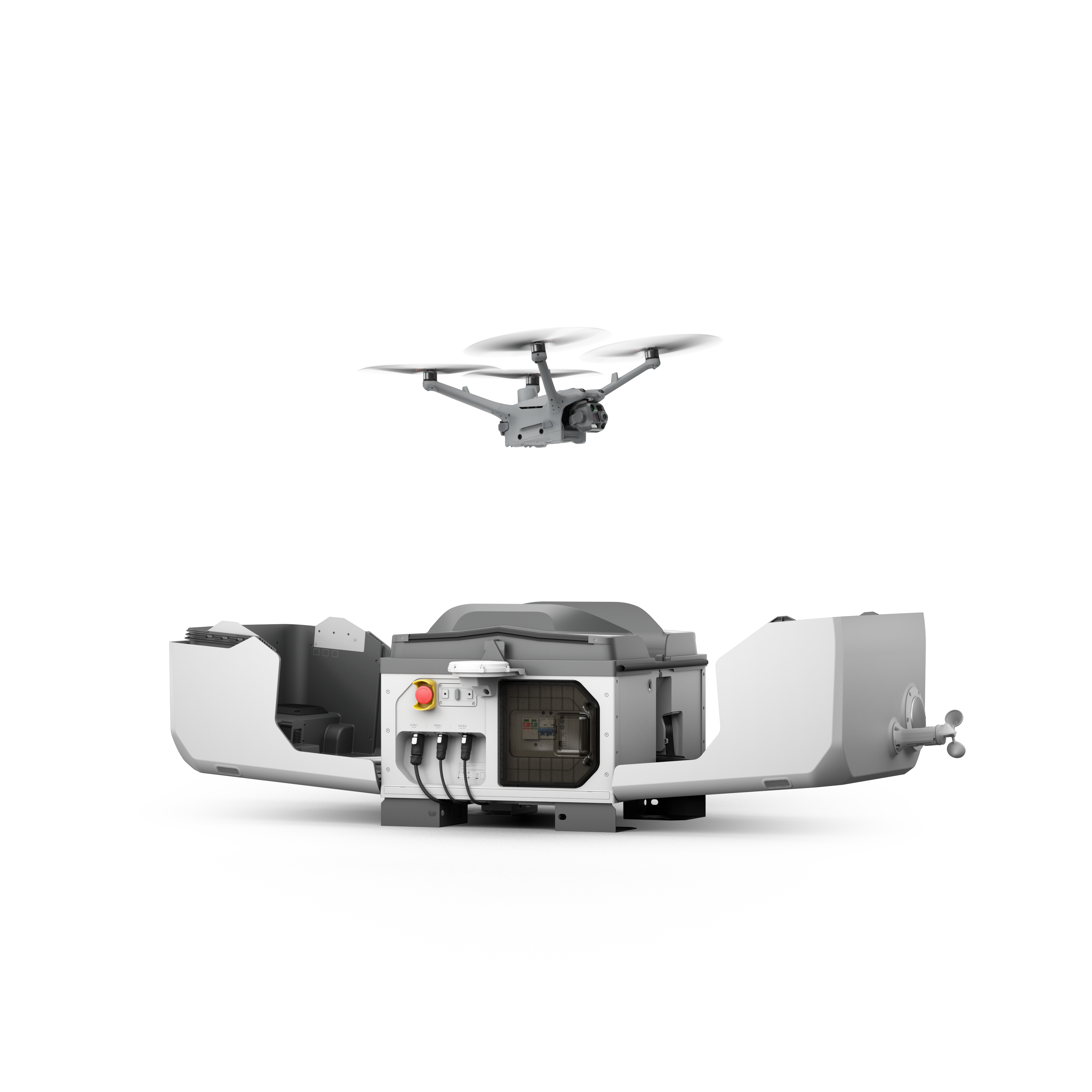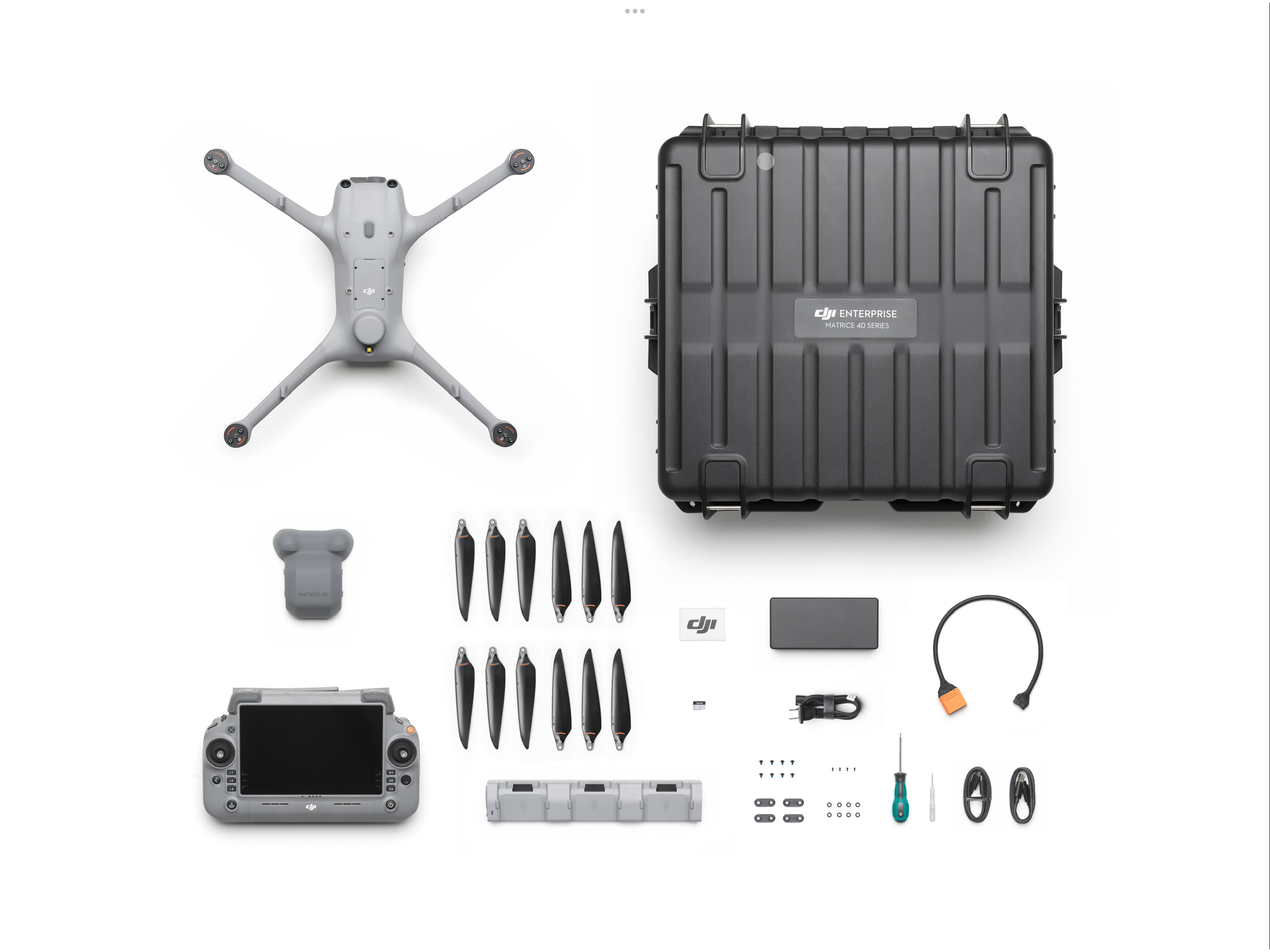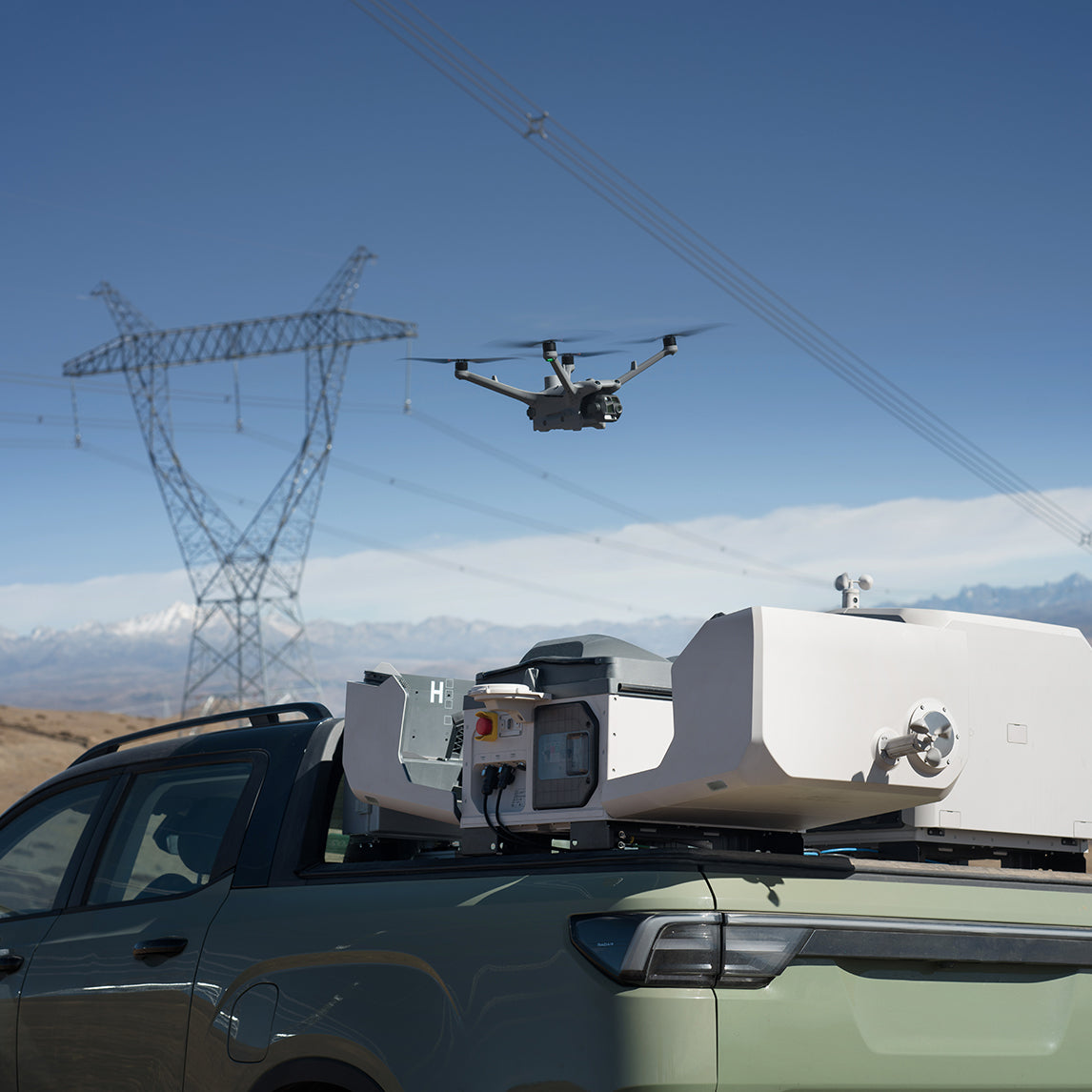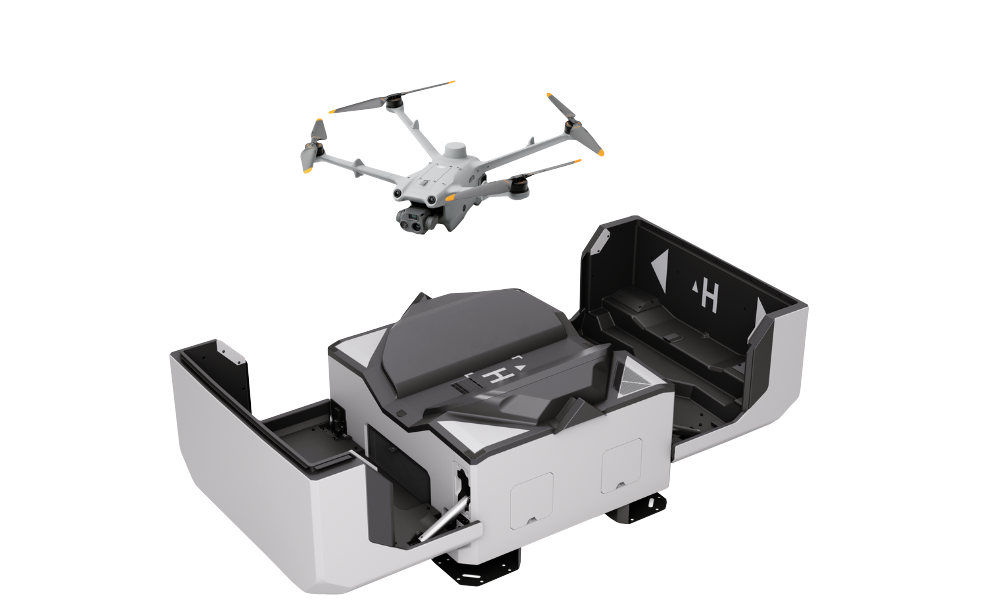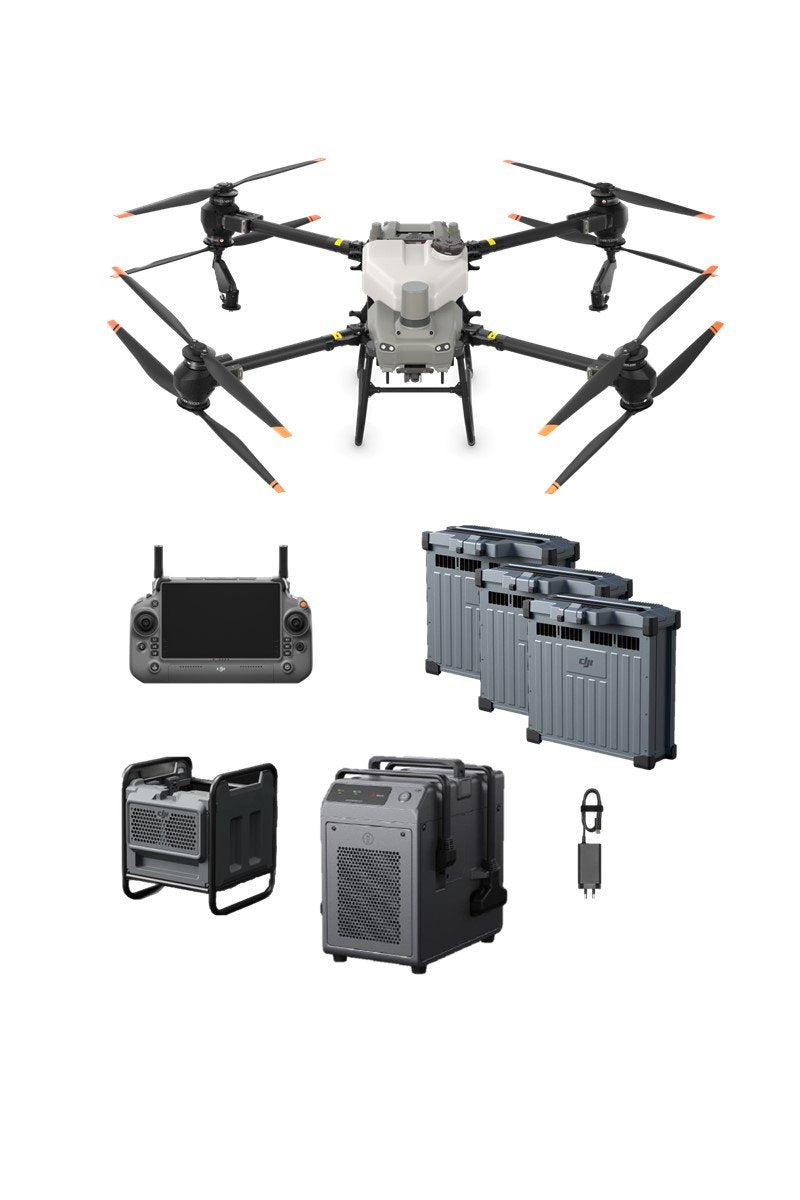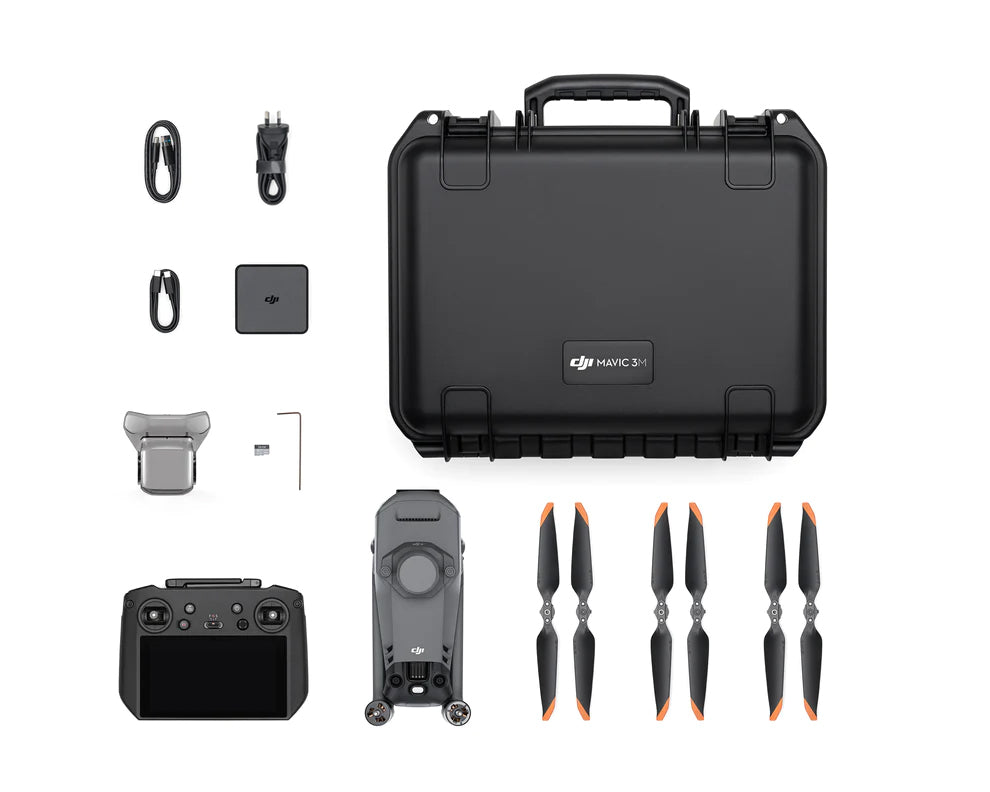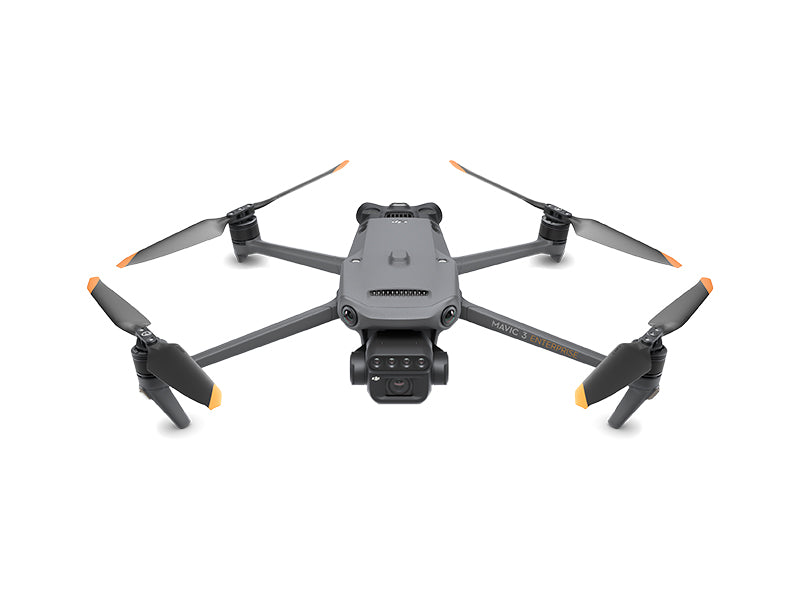- Matrice 4D is designed for high-precision mapping and detailed surface inspections. It features a 24mm wide camera (4/3 CMOS, f/2.8-f/11, 20MP) with a mechanical shutter, a 70mm medium tele camera (1/1.3-inch CMOS, f/2.8, 48MP), and a 168mm tele camera (1/1.5-inch CMOS, f/2.8, 48MP). When paired with FlightHub 2, operators can use the drone's powerful auto-zoom to quickly track a subject, such as a vehicle or vessel.
- Matrice 4TD is equipped with an infrared thermal camera and a new NIR auxiliary light with 100 meters of coverage for public safety, emergency response, and infrastructure inspections. It features the same tele camera and medium tele camera as the Matrice 4D but a smaller 24mm wide camera (1/1.3-inch CMOS, f/1.7, 48MP).
Adaptable to Extreme Environments
Designed for critical operations in extreme conditions, DJI Dock 3 can operate and charge seamlessly in extreme temperatures up to 50°C (122°F) and as low as -30°C (-22°F) when pre-heated. Its design further safeguards its internal system with an exceptional IP56 dust and water-resistant rating. The accompanying Matrice 4D and 4TD come standard with low-noise anti-ice propellers that can quietly maintain a stable flight even in freezing rain and wind as strong as 12 meters per second
Flexible Deployment, Ultra-Long Transmission
DJI Dock 3 can flexibly support emergency operations and long-distance inspections. Optimized for vehicle-mounted deployments for the first time, it supports horizontal calibration and cloud-based dock location calibrations. For higher efficiency, two docks can be simultaneously deployed on a single vehicle for dual-drone rotations. For fixed-mounted deployments, a new D-RTK 3 Relay Fixed Deployment Version* can be added to enhance the dock's anti-interference performance for video transmission and satellite acquisition.
Seamless Airborne Relay
With the DJI RC Plus 2 Enterprise remote controller, the Matrice 4D Series can fly standalone or with an innovative onboard relay function. This setup allows one drone to fly as a relay, extending the operational range of another drone - even without a 4G signal or in obstructed conditions. This ability can be especially critical during search and rescue missions or inspections in mountainous areas

